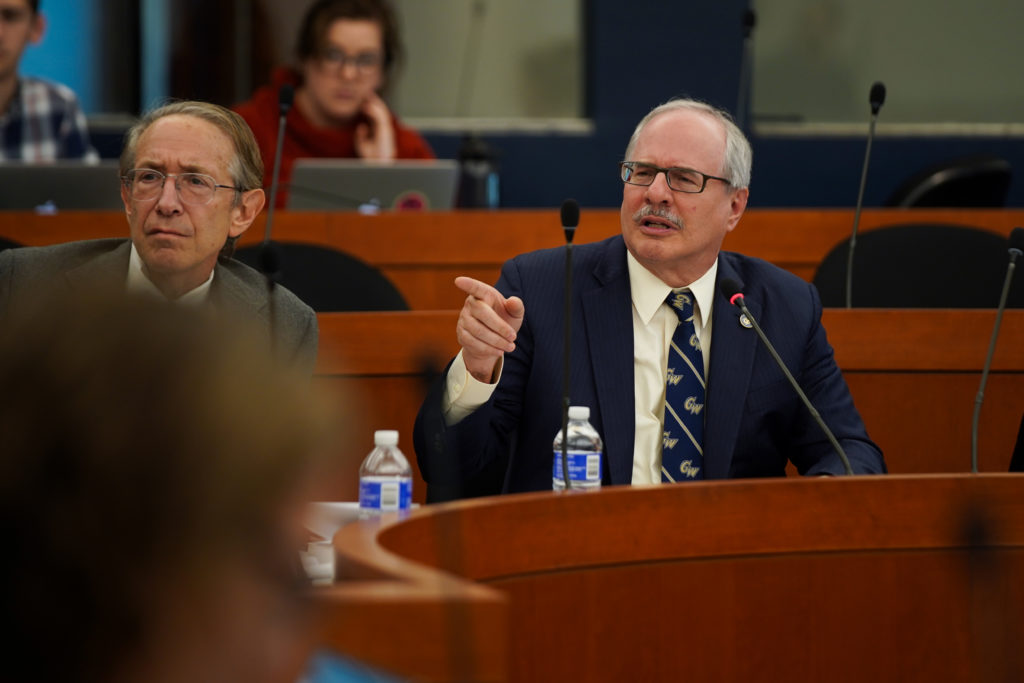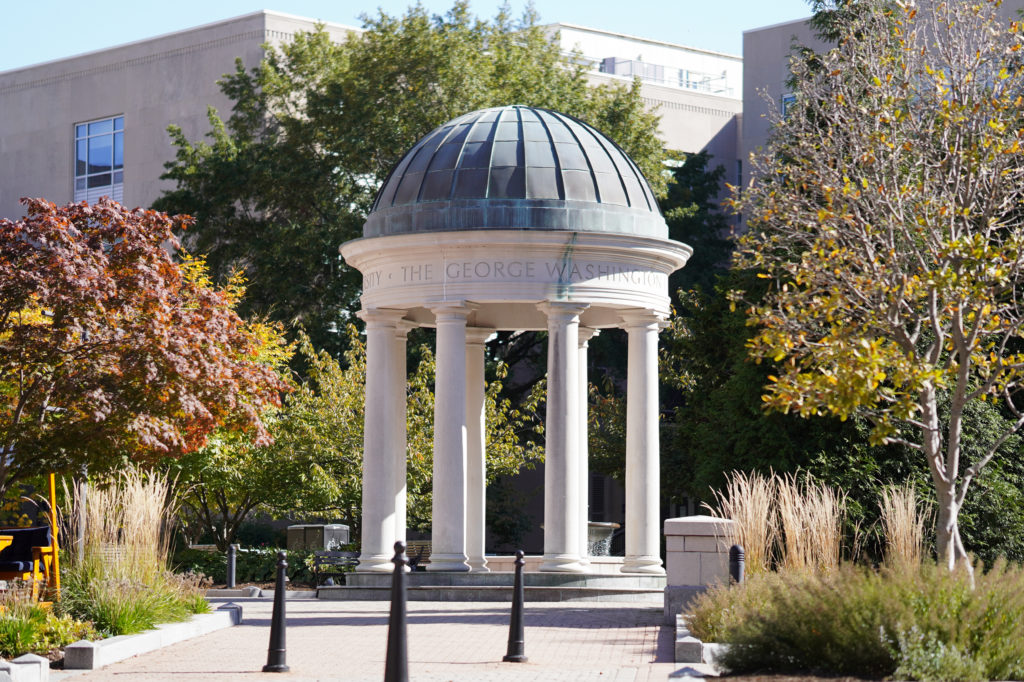In June, University President Thomas LeBlanc said layoffs needed to offset GW’s annual revenue gap would be completed in “the coming weeks.”
As the semester approached, Chief People Officer Dana Bradley told employees that layoffs would be fully implemented by the end of August.
In mid-September, LeBlanc said layoffs would be completed within two weeks as officials finalized the first phase of budget cuts.
In late September, LeBlanc told employees the first phase would be fully implemented “in the coming weeks,” and a second phase of financial mitigation – expected to save $60 million, closing the remainder of the University’s budget gap – would consist of using GW’s unrestricted assets and reducing non-recurring expenses.
But officials continued terminating staff positions through October and now say layoffs “may” continue as part of the second mitigation phase. When reached for comment, University spokesperson Crystal Nosal declined to answer all of The Hatchet’s questions about layoffs, adding that the second phase of cuts are ongoing.
“Further measures include identifying reductions in expenses at the discretion of the deans and unit leadership,” Nosal said in an email. “Those reductions may include a limited number of school- or unit-specific layoffs, furloughs and/or salary reductions.”
Nosal declined to say how many employees have been laid off during the pandemic or when layoffs will be fully implemented. She declined to say how much money layoffs have saved.
The layoffs have been met with widespread criticism from many faculty and staff, leading hundreds to call on LeBlanc to resign.
Many of the layoffs were implemented as part of a broader centralization of GW’s administrative units, including the University’s information technology, events and communications offices. Nosal said the consolidations are part of the first phase of budget cuts, which total $100 million.
“Those mitigation efforts included a salary freeze, a non-essential hiring freeze, leadership salary reductions, significant reductions in non-compensation budgets and administrative unit restructurings, including staff layoffs,” Nosal said. “The University also offset some of the negative budget impact by using reserves for one-time health and safety expenses.”
Officials also eliminated at least dozens of positions in other offices, including the Center for Career Services and Facilities Planning, Construction & Management.
The reductions have inflamed tensions, putting many faculty at odds with LeBlanc and the Board of Trustees. The Board passed a resolution earlier this month commending the GW community on its response to the pandemic.
“The entire George Washington University community has demonstrated resiliency, responded with care and compassion and persevered through the continued uncertainty,” the resolution states.
Trustees have repeatedly indicated support for LeBlanc amid calls for his resignation, stating in the resolution that University leadership has guided GW’s response to the pandemic “admirably” and prioritized the campus community’s health and safety.
“The George Washington University Board of Trustees expresses its deep appreciation and gratitude to the entire campus community for its coordinated response to the COVID-19 pandemic and looks forward to a brighter future together as the community will emerge from the pandemic stronger than ever,” the resolution states.
Board Chair Grace Speights acknowledged criticism of recent layoffs at a Faculty Assembly meeting Wednesday, adding that the new consolidated model will provide “better” and “more efficient” support to GW’s academic mission.
“No one likes to have to make decisions that affect people’s jobs and their families, and we appreciate that the leadership always kept care and concern for the community and the best interests of GW at heart,” Speights said.
She added that the pandemic has posed an “existential threat” to GW and other colleges. The Chronicle of Higher Education reported earlier this month that the higher education workforce has shrunk by at least 7 percent – roughly 337,000 employees – since the start of the pandemic.
“The Board of Trustees asked the University’s leadership to explore and consider all appropriate options to address the immediate needs of the University,” she said. “The shortfalls in our budget were large, and very difficult decisions had to be made.”
Speights applauded LeBlanc’s decision to not implement an across-the-board faculty pay cut, adding that trustees approved principles to spend a higher percentage of revenue on the University’s direct academic mission and faculty support.
LeBlanc said at the assembly meeting that GW continues to face “many” challenges as a result of the pandemic.
“This has been a year unlike any we have ever seen,” he said. “We have been through some incredibly difficult months, arguably one of the biggest challenges we have faced as a university.”
LeBlanc said at the meeting he believes GW can address difficult obstacles and strengthen the University’s future.
“Our future is going to look very different than the past,” LeBlanc said. “It’s also going to look different than what we thought early this year.”








